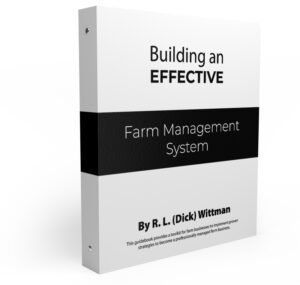Building Effective Farm Management Systems
A toolkit for farm businesses to implement proven strategies to become a professionally managed farm business.
This guidebook, developed in workbook format, leads you systematically through implementation of key management applications. The guidebook mirrors the process I’ve discussed over the last 30 years in seminars on “Managing Business Relationships and Transitions on Family Farms.”
Each chapter contains:
- A conceptual discussion of key management concepts and how they apply to family farm management,
- Sample documents and case scenarios illustrating how these concepts have been implemented in a variety of farm environments, and
- Worksheets or templates designed to lead the user through an orderly process for implementing the concepts in day-to-day family farm management (including 23 template files and programs).
The application template files will help you jump start implementation by providing foundation material that can be molded, edited, and supplanted to create your own management system documents. Template files include Mission, Vision and Core Value Statements; Job Descriptions; Company Policies; Standard Operating Procedures; Planning Systems; Compensation Summaries; Control and Performance Evaluation Systems, and many more.
Why the Guidebook?
Countless books, media articles and speakers help raise awareness regarding problems related to family farms. My goal is not to simply discuss problems, but to equip family farm businesses to implement solutions..
This guidebook was developed to help you articulate where you want your family farm business to be and how to build a management system path to take you there. The process works, and those who plan to remain competitive and survive are finding they must incorporate these disciplines in their farm business.


